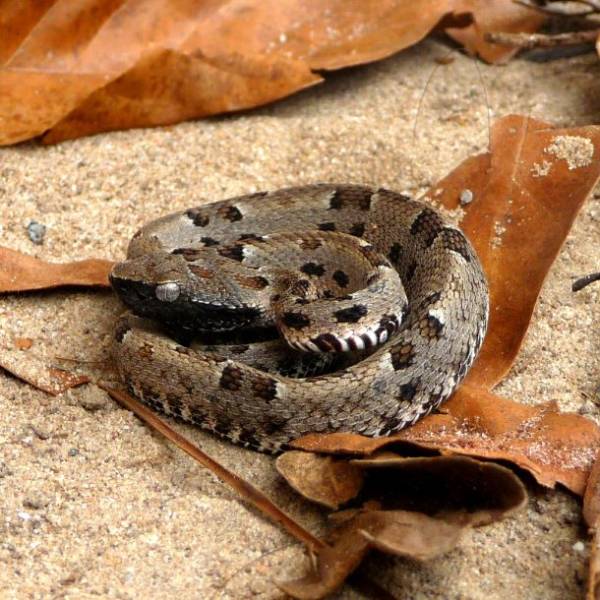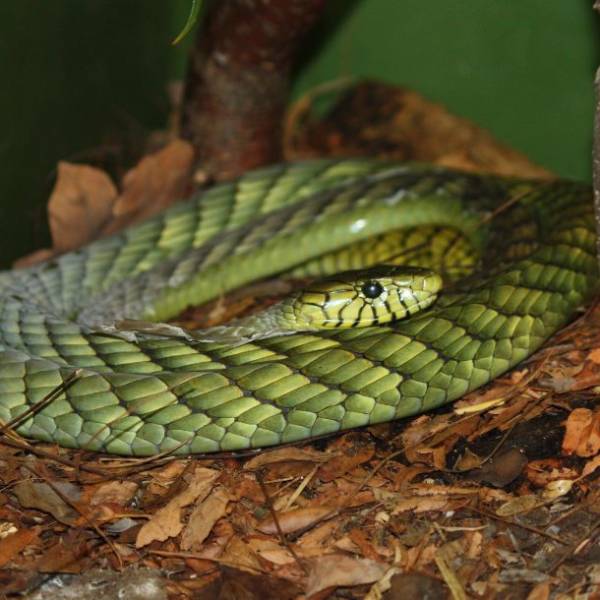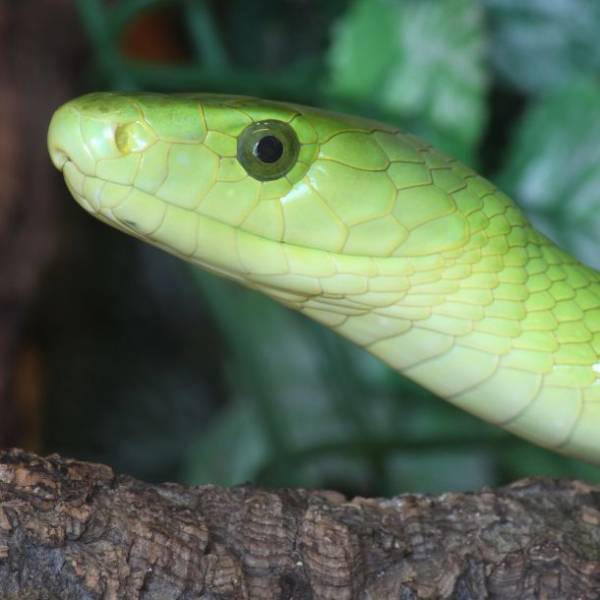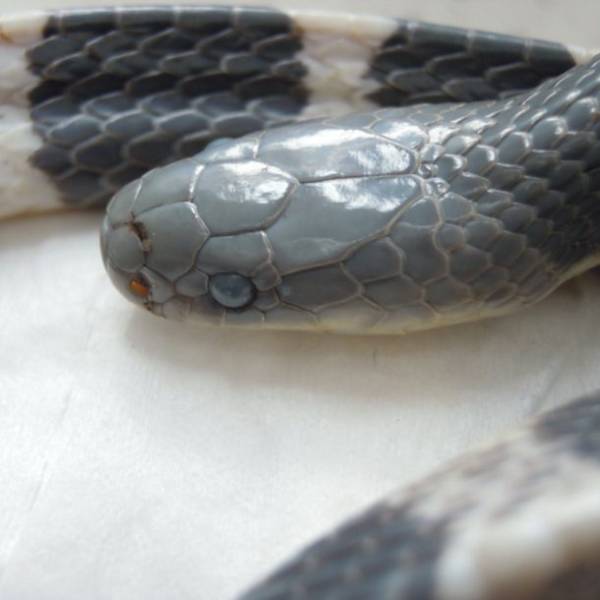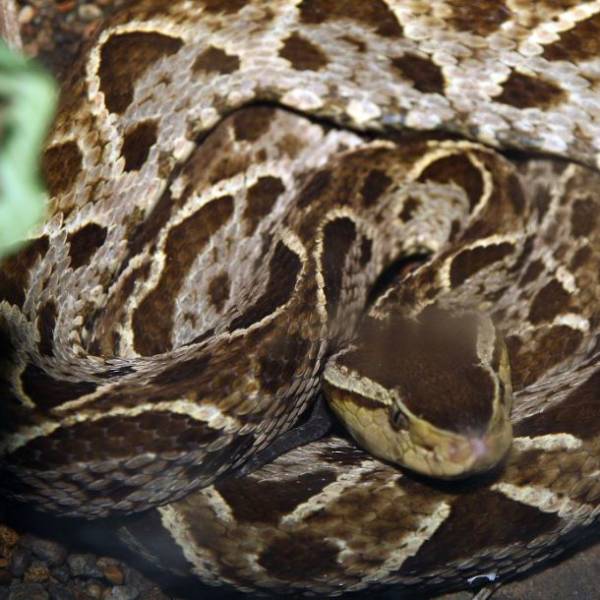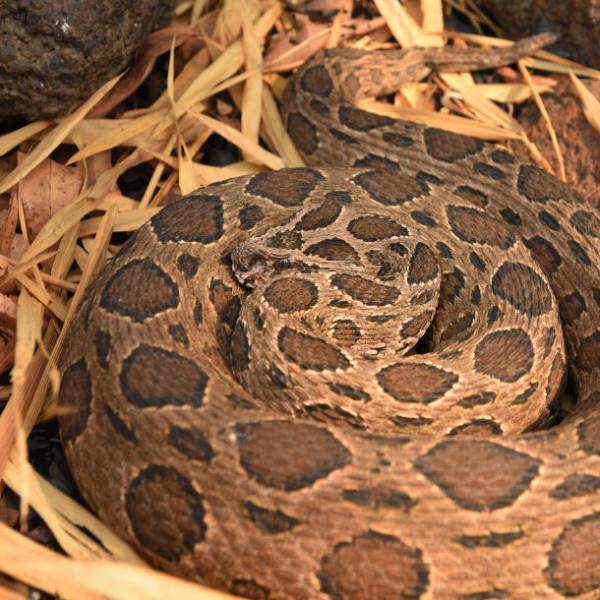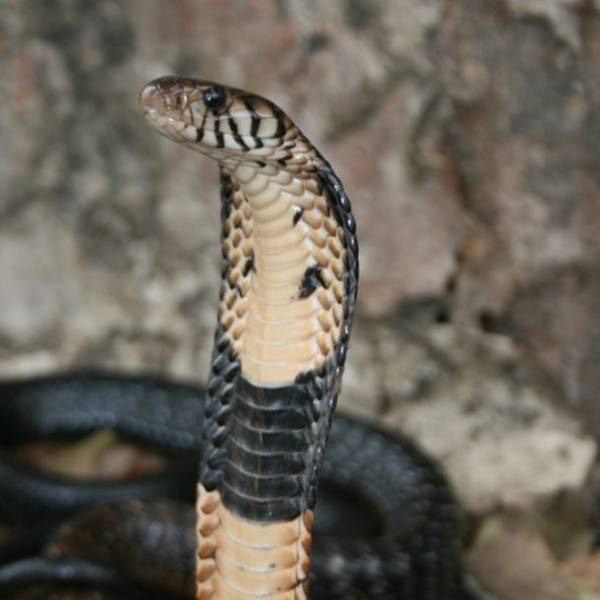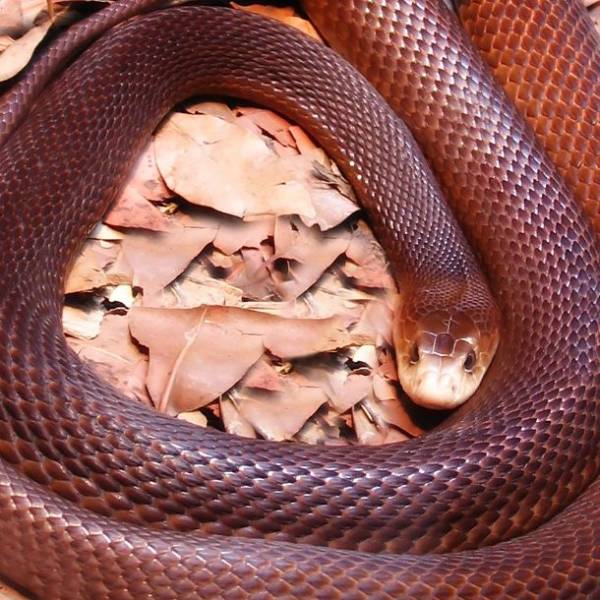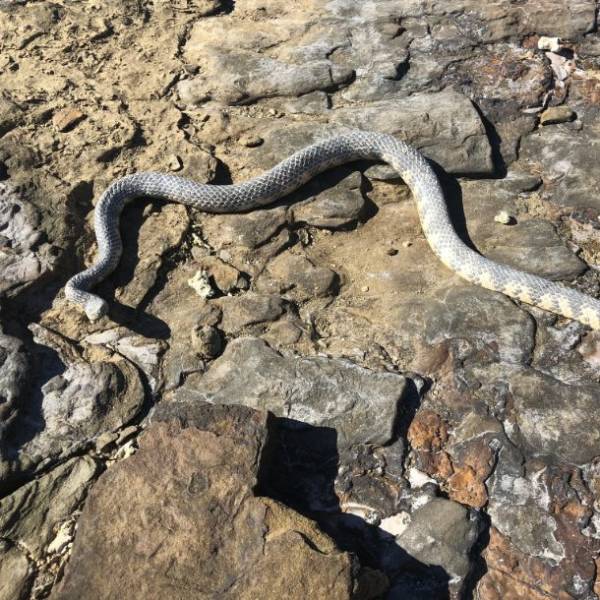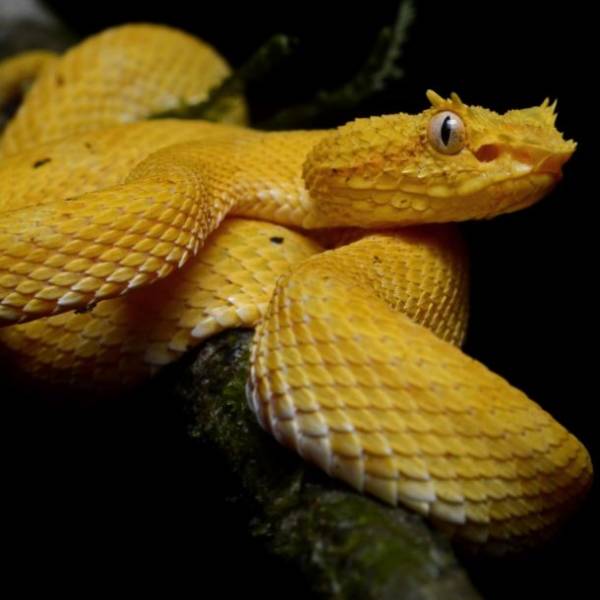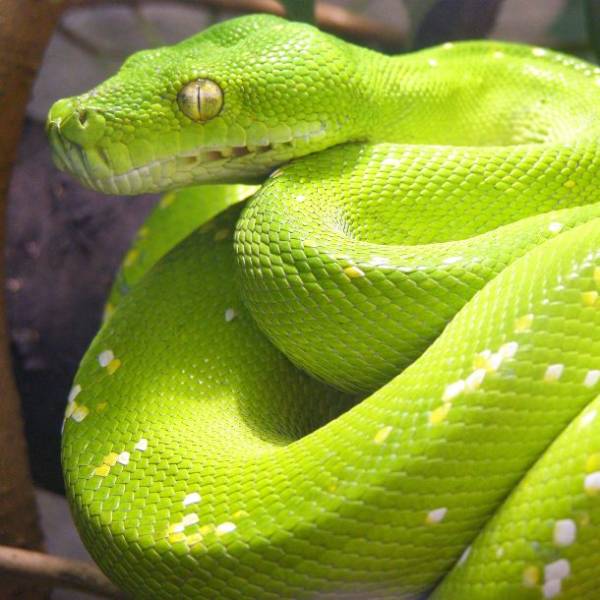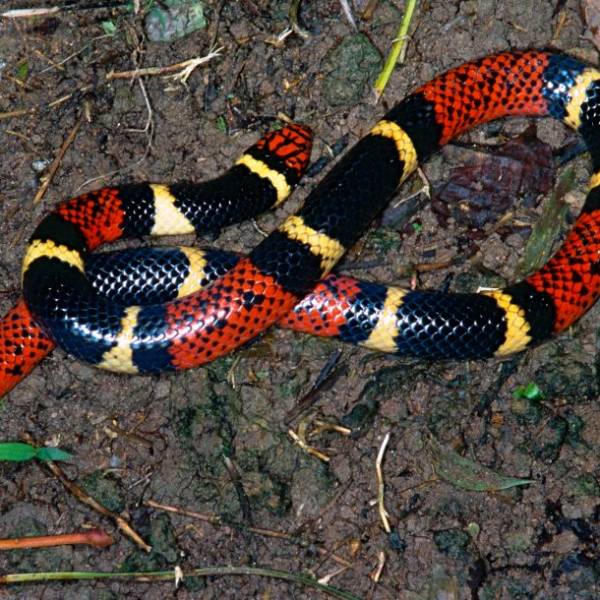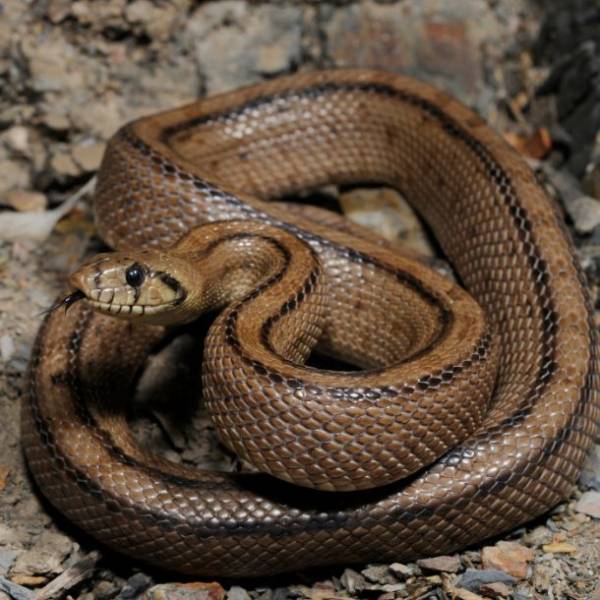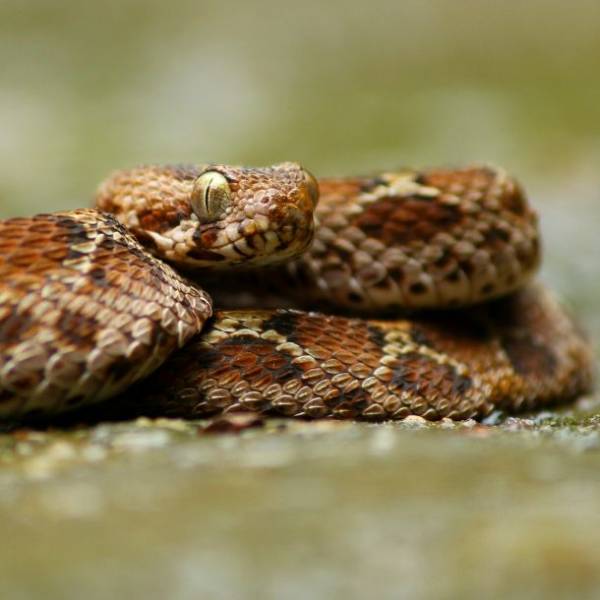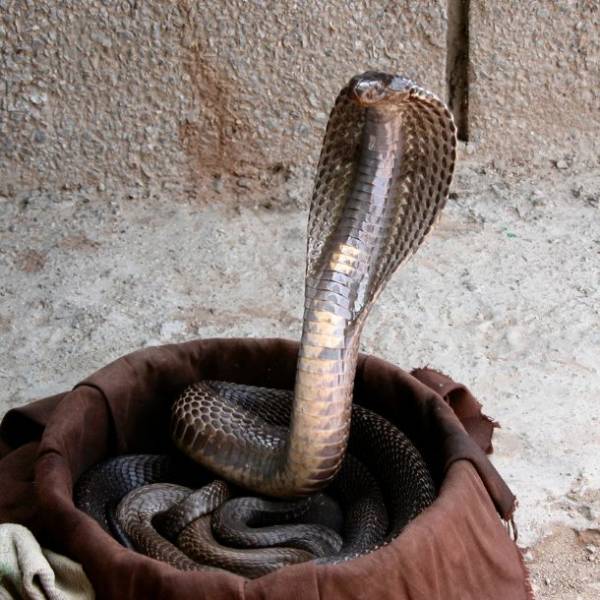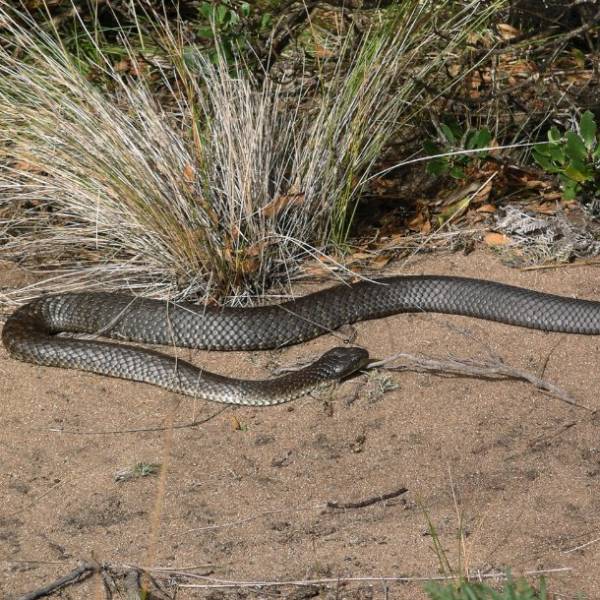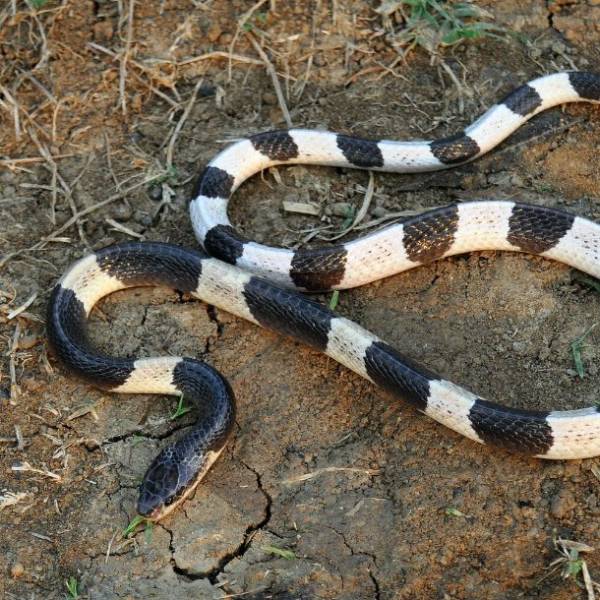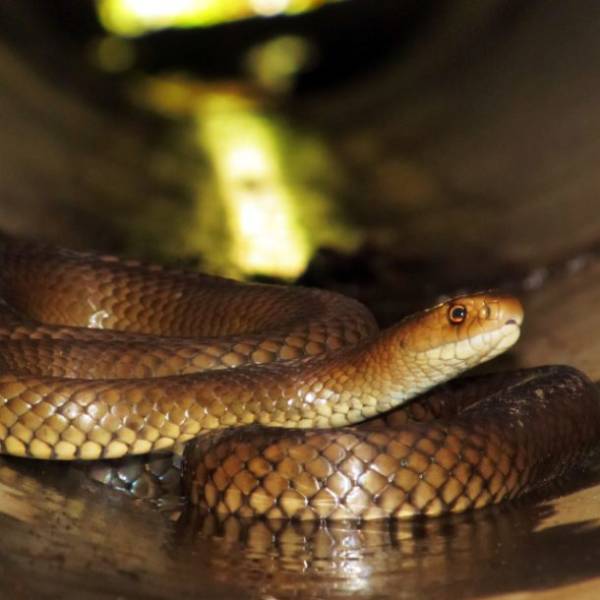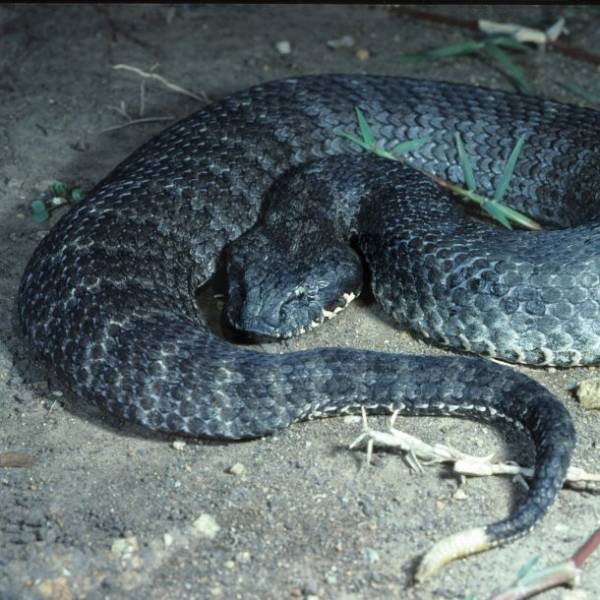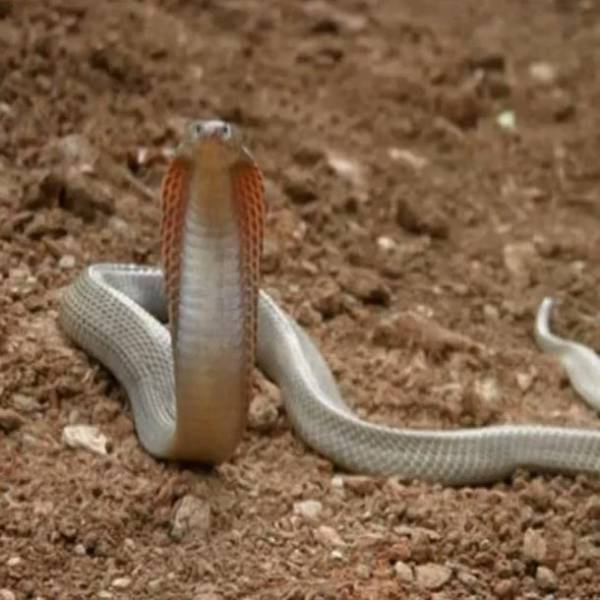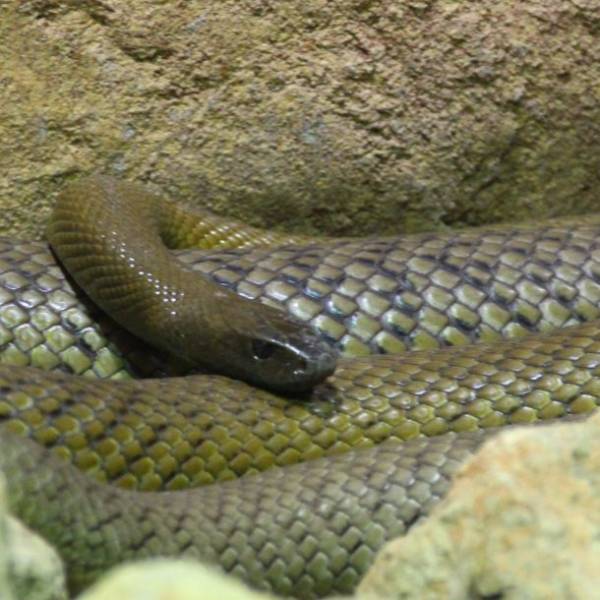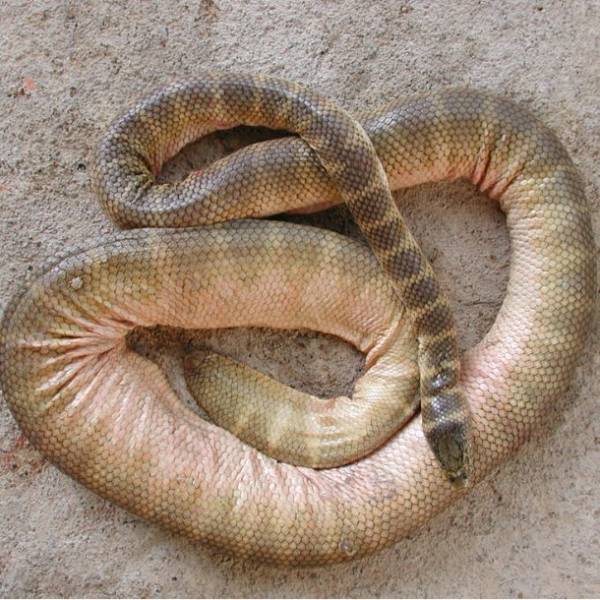Jararaca
The Jararaca is a venomous snake that lives in the wealthy and heavily populated areas of southeastern Brazil. Though they primarily make their habitat in dense evergreen and deciduous tropical forests, the Jararaca bite in urban settings are well-documented. It causes swelling, systemic bleeding from skin, and in severe cases, death due to shock.
Viper
The Viperidae family of snakes are considered some of the most venomous reptiles in the world. They generally eat small rodents which they hunt by striking and envenomating with deadly, paralyzing neurotoxins. In cases of bites to humans, vipers sometimes extend their fangs without releasing any venom to deliver a “dry bite” so their venom reserves aren’t depleted.
Western Green Mamba
The Western Green Mamba is a very alert, nervous, and extremely agile snake that lives mainly in the coastal tropical rain forest, thicket, and woodland regions of western Africa. Like all the other mambas, the Western Green has a terrible bite. The venom can kill several humans in a short period of time if it goes untreated.
Eastern Green Mamba
Like other species of mamba, the eastern green mamba is highly venomous; a single bite contains enough venom to kill several people. The venom primarily affects the victim’s nervous system. Bites rapidly progress to life-threatening symptoms, including respiratory paralysis and cardiac arrest.
Many-Banded Krait
The Many-Banded Krait is among the most venomous land snakes in Asia. The species was first described by the scientist Edward Blyth in 1861. Its venom is potent enough to kill two dozen men! The snake tends to be docile, but it can attack and bite from multiple directions swiftly.
Bothrops Asper
The Bothrops Asper is a nocturnal snake found in a wide range of lowland habitats, often near human dwellings. Its proximity to humans is likely the reason why it is considered quite dangerous especially in the country of Costa Rica where its responsible for almost fifty percent of snake bites. This is a highly irritable and fast snake that humans would do best to stay far away from!
Russell’s Viper
The Russell’s viper is one of the most dangerous snakes in all of Asia. It’s responsible for thousands of deaths annually. This snake’s bite causes a whole host of debilitating symptoms including swelling, nausea, and kidney failure. Definitely not a serpent anyone should mess with!
Forest Cobra
Not as notorious as its Indian cousin, this species is still very alert, nervous, and is considered a very dangerous snake. When it feels threatened, it will assume the typical cobra warning posture by raising the front of its body off the ground, spreading its hood, and hissing loudly. Bites to humans are less common than other cobras, but a bite from this species is still a life-threatening emergency.
Coastal Taipan
The coastal taipan is often regarded as the most dangerous snake in Australia. They are extremely nervous and alert, and any movement near them is likely to trigger an attack. Like any snake, the taipan prefers to avoid conflict and will quietly slip away if given the chance; however, if surprised or cornered, it will ferociously defend itself; its venom will most likely kill you within a few minutes.
Dubois’s Sea Snake
This treacherous swimming snake is found from the coasts of western and northern Australia to the islands of New Guinea and New Caledonia. Although the Dubois’s sea snake has one of the deadliest venoms known, its bite delivers less than one-tenth of a milligram, which is usually not enough to kill a human.
Eyelash Viper
A typical ambush predator, the eyelash viper waits patiently for unsuspecting prey to wander by. Sometimes it selects a specific ambush site and returns to it every year during the spring migration of birds. These snakes learn to improve their strike accuracy over time. There are rumors among villagers in parts of South America that it will wink, flashing its eyelashes at its victim, after delivering a venomous strike.
Boomslang
Many venomous members of the family Colubridae—to which the boomslang belongs—are harmless to humans because of small venom glands and inefficient fangs. However, the boomslang is exceptional because it has a highly potent venom, which is delivered through large fangs located at the back of its jaw. Boomslangs are able to open their jaws up to 170° when biting, allowing them to release more venom which usually kills the victim from internal or even external bleeding.
Coral Snake
A single bite from a coral snake doesn’t seem to cause much harm since there is typically no pain or swelling at first. However, if left untreated, the snake’s venom can cause muscular paralysis, double vision, and cardiac arrest. Though they are quite reclusive, coral snakes will attack if provoked and should be avoided by humans.
Western Brown Snake
The Western Brown Snake, or gwardar, is a species of very fast, highly venomous elapid snake native to Australia. Its color and pattern are rather variable depending largely on its location. The Western Brown’s venom and the fatal damage it causes its victims (including humans) makes it a dangerous snake to encounter in the wild.
Saw-Scaled Viper
Saw-scaled vipers are small but their irritability, aggressive nature, and lethal venom make them very dangerous. They are usually quick to strike and mortality rates for those bitten are high. In the regions where they live (Africa, Arabia, Southwest Asia), it’s responsible for more human deaths than all other snake species combined.
Rattlesnake
Even though rattlesnake bites are rarely fatal to humans when given proper medical treatment, its bites are some of the most frequent among all snakes. The greatest concentration of them is in the Southwest United States and northern Mexico. Arizona alone is home to thirteen species of rattler, more than any other state.
Indian Cobra
Arguably the most popular snake in the world, this highly venomous snake feeds on rodents, lizards, and frogs. As well as biting, the Indian cobra can attack or defend itself from a distance by spitting venom which causes severe pain and damage if it enters its prey’s eyes.
Black Mamba
Black mambas are fast, lethal, and highly aggressive. They have been blamed for numerous human deaths and African myths exaggerate their capabilities to legendary proportions. For these reasons, the black mamba is widely considered the world’s deadliest snake.
Tiger Snake
Native to Australia, tiger snakes have a truly fearsome reputation all over the country, where they are considered some of the most dangerous predators. This species is much maligned because of its aggressive nature and toxic venom. However, it should be recognized as a great survivor, superbly adapted to some of the most inhospitable environments in Australia.
Blue Krait
The blue krait that we often meet in Thailand is considered a highly dangerous snake, since more than fifty percent of all bites result in death—even with the administration of anti-venom. Fortunately, these snakes are not considered very aggressive or defensive and only much provocation will cause them to bite.
Eastern Brown Snake
This snake is considered the world’s second most venomous land snake based on its LD50 value (a measure of the lethal dose of a toxin) in mice. The Eastern Brown Snake is native to Australia, Papua New Guinea, and Indonesia, where it has often spread its deadly terror to human beings.
Death Adder
The common death adder is a species of adder native to Australia. It is one of the most venomous land snakes in Australia. Unlike other snakes, the common death adder lies in wait for its prey—often for many days—until a meal passes. It covers itself with leaves for camouflage and quickly strikes its prey. Once injecting its venom, it waits for the victim to die before eating it.
Philippine Cobra
Among all cobra species, toxicology experts claim the Philippine cobra possibly possesses the most toxic venom. One bite from this deadly spitting cobra can kill a human within a half hour. Its venom has the deadly ability to interrupt the transmission of nerve signals and to cripple respiratory systems. This alone makes it one of the deadliest snakes in the world.
Inland Taipan
The impressive thing about this snake isn’t just how venomous it is but how fast it bites. It usually kills its prey with a series of rapid strikes. It injects venom unequaled in toxicity among any snake anywhere in the world.
Belcher’s Sea Snake
According to many experts, the Belcher’s sea snake’s venom is about a hundred times more toxic than any other snake in the world. Just to give you an idea how toxic, one drop of venom from a King Cobra is powerful enough to kill well over 150 people, while only a few milligrams of the Belcher’s sea snake’s venom can kill over 1,000 people. The good thing is that this snake is considered to be very timid and would take a lot of provoking for it to bite you.

